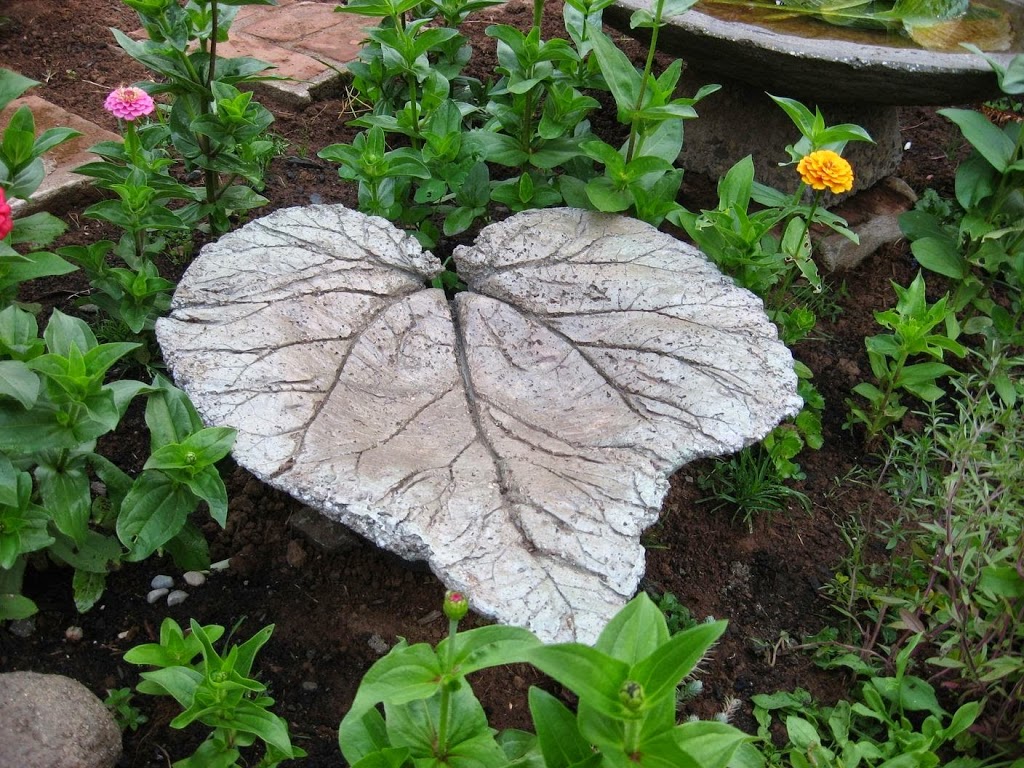In creative ideas there are no limits, and our garden gives us many excuses to add decorative elements that cannot be missing in it. It also gives us the inspiration to develop these ideas ourselves and materialize them. This is a good example of it. It is the use of leaves as a pattern to make a path with your own design.

These sheet-like pieces of concrete that serve as footprints on natural terrain are easy to make and require only a few tools. Use these footprints to create a path to your garden or anywhere you want to have an easy path to travel, or simply to add accents to your flower beds. Choose a workspace that is level, and will not be disturbed for a few days while your prints dry.
How to make a beautiful path in the garden in the form of a leaf.
Instructions:
- Choose sturdy green rhubarb leaves or the plant that is best accessible to you and that meets these characteristics. Measure the size of your sheet. Cut a square of sturdy plastic tarp that is 6 inches larger than your sheet. Lay the plastic on a level surface.
- Put on a dust mask, eye protection, and leather gloves. Mix the concrete in a bucket, following the manufacturer’s instructions. Add colored admixture to concrete, following manufacturer’s instructions.
- Lay the sheet on top of the plastic with the back of the sheet facing up. Put on the rubber gloves. Spread a 1 to 1½-inch thick layer of concrete on the back of the sheet with a trowel. Spread the concrete 1 inch past the edges of the sheet. Before starting, you can place a little oil on the sheet where you will spread the concrete, so it can take off better when the time comes to do it.
- Cut chicken wire with wire cutters to a shape 1 ½ inches smaller than the leaf shape. Flatten the wire mesh into the wet concrete. Spread another 1-inch layer of concrete over the wire mesh, applying light pressure with the trowel.
- Wrap excess plastic up over the back of the sheet. Lay a second sheet of plastic over the top. Let the concrete dry for two days.
- Peel the plastic off the stone. Gently flip one side of the sheet over. Peel the sheet from to reveal the pattern. Brush the rest of the blade with an old toothbrush and water.
- Cure the mark for a week, spraying with water daily so that it does not dry out.
- Dig a resting place for the footprint. Dig a 3-inch hole in the shape of the step. Pour a 1-inch layer of sand into the hole. Gently set the back of the stone on the sand. Make sure the stone sets are level and will not move when you step on it.







